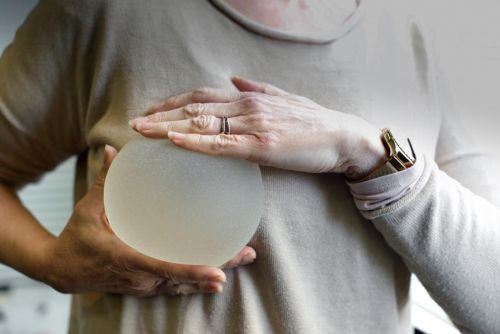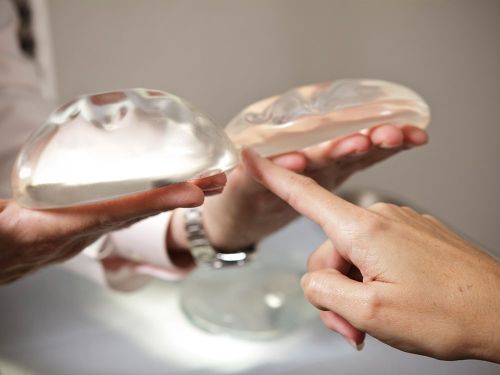Breast augmentation involves the use of artificial implants, usually containing silicone or saline (saltwater). It is chosen to increase breast volume, either for aesthetic reasons or after breast cancer treatment. Breast implants are surgically placed under the breast tissue. They come in various sizes and shapes and are selected according to personal preferences. They not only provide an aesthetic appearance but also boost the individual's self-confidence.
When are Breast Implants Used?
 Women with small breasts may choose breast augmentation for aesthetic reasons. Part or all of the breast tissue may be removed due to breast cancer. In this case, patients may undergo the procedure to regain lost volume. Asymmetry or developmental abnormalities may occur from birth, and breast implants can be used to ensure symmetry. Imbalances or differences in breast size can be corrected for aesthetic reasons. Women experiencing sagging or loss of volume over time may opt for a youthful appearance. Tissue loss due to trauma, surgery, or other health issues can be repaired with implants. These situations are important reasons for undergoing breast implants to improve quality of life. Additionally, these procedures aim to boost self-confidence.
Women with small breasts may choose breast augmentation for aesthetic reasons. Part or all of the breast tissue may be removed due to breast cancer. In this case, patients may undergo the procedure to regain lost volume. Asymmetry or developmental abnormalities may occur from birth, and breast implants can be used to ensure symmetry. Imbalances or differences in breast size can be corrected for aesthetic reasons. Women experiencing sagging or loss of volume over time may opt for a youthful appearance. Tissue loss due to trauma, surgery, or other health issues can be repaired with implants. These situations are important reasons for undergoing breast implants to improve quality of life. Additionally, these procedures aim to boost self-confidence.
How are Breast Implants Performed?
 Before the surgery, the doctor evaluates the patient’s medical history and performs a physical examination. Additionally, a detailed consultation is conducted to understand the patient’s expectations and goals. The patient is informed about anesthesia, and necessary blood tests are done. Breast implant surgery is usually performed under general anesthesia, ensuring the patient does not feel pain and sleeps comfortably during the procedure. The doctor uses different incision techniques to determine where to place the implant. The inframammary incision is made in the natural crease under the breast, being the least noticeable aesthetically. The axillary incision is made from the armpit, reducing cuts on the breast. The areola incision is made around the nipple, with the implant placed through the cut around the areola. After the incision is made, the doctor places the breast implant, which usually comes in two types filled with silicone or saline. The implant can be placed under the breast (subglandular) or under the muscle (submuscular). The method used depends on the patient’s body structure and aesthetic goals. After placing the breast implant, the incisions are carefully closed. Stitches are usually done to be less noticeable aesthetically. The surgery must be performed by a specialist surgeon, and all risks and benefits should be evaluated beforehand.
Before the surgery, the doctor evaluates the patient’s medical history and performs a physical examination. Additionally, a detailed consultation is conducted to understand the patient’s expectations and goals. The patient is informed about anesthesia, and necessary blood tests are done. Breast implant surgery is usually performed under general anesthesia, ensuring the patient does not feel pain and sleeps comfortably during the procedure. The doctor uses different incision techniques to determine where to place the implant. The inframammary incision is made in the natural crease under the breast, being the least noticeable aesthetically. The axillary incision is made from the armpit, reducing cuts on the breast. The areola incision is made around the nipple, with the implant placed through the cut around the areola. After the incision is made, the doctor places the breast implant, which usually comes in two types filled with silicone or saline. The implant can be placed under the breast (subglandular) or under the muscle (submuscular). The method used depends on the patient’s body structure and aesthetic goals. After placing the breast implant, the incisions are carefully closed. Stitches are usually done to be less noticeable aesthetically. The surgery must be performed by a specialist surgeon, and all risks and benefits should be evaluated beforehand.
Post-Breast Implant Care
 Resting for the first few days after surgery will help the body heal. Avoid heavy lifting or intense physical activities for the first few weeks. Regularly check the bandages given by your doctor after the breast implant. If you have stitches, take care of them and keep them clean as recommended by your doctor. You may feel pain after the surgery; use the painkillers prescribed by your doctor. If your doctor has given antibiotics, use them for the specified period. Consult your doctor before performing any breast massages; in some cases, massage can support healing. Wear comfortable and loose clothing. A supportive bra may be recommended. Avoid hot baths and pools for the first few weeks. Swimming pools and the sea can increase the risk of infection during the healing process. Attend the follow-up appointments as scheduled. If there are any problems or changes, consult your doctor. You may experience emotional changes after the operation; consider seeking support from a specialist if needed. Eating a balanced and healthy diet will contribute to the healing process. Remember to drink plenty of fluids. If you experience abnormal symptoms such as swelling, redness, excessive pain, or fever, contact your doctor immediately. These post-breast implant care instructions will help ensure a healthy recovery process. Always follow your doctor’s advice.
Resting for the first few days after surgery will help the body heal. Avoid heavy lifting or intense physical activities for the first few weeks. Regularly check the bandages given by your doctor after the breast implant. If you have stitches, take care of them and keep them clean as recommended by your doctor. You may feel pain after the surgery; use the painkillers prescribed by your doctor. If your doctor has given antibiotics, use them for the specified period. Consult your doctor before performing any breast massages; in some cases, massage can support healing. Wear comfortable and loose clothing. A supportive bra may be recommended. Avoid hot baths and pools for the first few weeks. Swimming pools and the sea can increase the risk of infection during the healing process. Attend the follow-up appointments as scheduled. If there are any problems or changes, consult your doctor. You may experience emotional changes after the operation; consider seeking support from a specialist if needed. Eating a balanced and healthy diet will contribute to the healing process. Remember to drink plenty of fluids. If you experience abnormal symptoms such as swelling, redness, excessive pain, or fever, contact your doctor immediately. These post-breast implant care instructions will help ensure a healthy recovery process. Always follow your doctor’s advice.


